Yamaha HHS3 Handleiding
Yamaha
Muziekinstrument
HHS3
Bekijk gratis de handleiding van Yamaha HHS3 (4 pagina’s), behorend tot de categorie Muziekinstrument. Deze gids werd als nuttig beoordeeld door 87 mensen en kreeg gemiddeld 5.0 sterren uit 44 reviews. Heb je een vraag over Yamaha HHS3 of wil je andere gebruikers van dit product iets vragen? Stel een vraag
Pagina 1/4

ミュート本体 を楽器のベルに差し込んだ後、 以下の手順でしっかりと装着してください。
このたびは、ヤマハ製品をご購入いただき、誠にありがとうございます。
本製品はアルミ材で軽量化しつつも従来の剛性を維持したドラムセットハード
ウェアです。本製品の機能を活かし、安全に使うためには、この取扱説明書を
よく読んでからご使用ください。お読みになったあとは製品と共に保管し、い
つでもご覧になれるようにしてください。
【同梱品】
・
収納用バンド
・
保護袋
・
安全上のご注意
・
サービス拠点情報
■ 安全上のご注意
・
従来のクロムめっき製品に比べ、表面が傷つきやすい仕様になっております。
使用時、運搬時にはぶつけたり、激しく擦れたりしないようご注意ください。
運搬時には同梱の保護袋に入れて持ち運んでください。
・ 軽量スタンドのため、極度な重量楽器をセッティングした場合、バランスが
悪くなることが想定されます。演奏、展示の際には楽器をセッティング後ご
確認の上ご使用ください。
■ セットアップ
ハイハットスタンドを立てる
1 収納用バンドを外し、ウイングボルト
(1)
を緩めて、三本の脚
(2)
を広げます。
2 安定する位置を決めたら、ウイングボルト
(1)
を締め付けます。
NOTE このとき、ベースフレーム(3)の底部を床面から1〜2mm浮かせ
るように設定してください。
3 ヒール(4)から伸びている連結棒(5)を、ベースフレーム(3)の2
カ所の孔にそれぞれ内側からはめこみます。
4 踏み込んだときスタンドが奥にずれないようにするには、ベースフ
レーム(3)の下部2カ所に用意されたストッパー(6)を使います。
ストッパー頭部を時計方向に回すとスパイク部分が床に出てきます。
床を傷付けないようにカーペットなどを敷いてお使いください。
5 ハイハットクラッチ(7 8)を取り外して上部パイプ( )からハイハッ
トシャフト(9)を引き抜きます。
6 締付ベース(10)内部のジョイント(11)に、ハイハットシャフト
(9)をしっかりとネジ込みます。
7 ハイハットシャフト(9)の上から上部パイプ(8)を被せ、演奏しや
すい高さで締付ベース(10)のウイングナット(11)を締めて固定し
ます。
ハイハットシンバルを取り付ける
ハイハットのボトムシンバルを受皿(12)の上に、トップシンバルを
ハイハットクラッチ(7)に、それぞれ取り付けます。
1 受皿(
12
)の上に、HSメタルワッシャー(
13
)、フェルトワッ
シャー(
14
)、ボトムシンバルの順に載せます。ボトムシンバルの
傾きはツマミボルト(
15
)で調整します。
2 ハイハットクラッチ(7)の下部のクラッチナット(16)を一旦外し
て、二枚のフェルト(17)の間にトップシンバルを挟み、クラッチ
ナット(16)が止まるまで指で締め直します。
3 トップシンバルを取り付けたハイハットクラッチ(7)をハイハット
シャフト(9)に通し、ペダル(18)を踏んでシンバル同士が適当な
間隔になるようにして、固定します。
4 ハイハットクラッチ(7)上部の二つ一組のロックナット(19)で、
トップシンバルの固定具合を調節します。
日本語 JA
ハイハットスタンド / Hi-hat stand / Pied de Charleston / HiHat-Ständer / Supporte per Hi‐Hat
取扱説明書 / Owner’s Manual / Mode d'emploi / Bedienungsanleitung / Manuale di istruzioni
HHS3
ZY37450
Published 07/2017 发行 : POA0
10-1 Nakazawa-cho, Naka-ku, Hamamatsu, 430-8650 Japan
Manual Development Group
© 2017 Yamaha Corporation
Printed in Taiwan P. 1
( )10
( )2
( )1
( )11
( )9
( )8
( )7
( )15
( )12
( )14
( )13
( )16
( )19
( )15
( )9
( )2
( )2
( )4
( )5
( )18
( )3
( )6( )5
( )9
( )17
( )17
( )7
Thank you for purchasing this Yamaha product.
This product is made from aluminum, which makes it lighter yet retains the rigidity
of conventional drum hardware. To use the product safely and get the most out of
its features, be sure to read this Owner’s Manual carefully. After reading, be sure
to keep it with the product so that you can easily refer back to it again as needed.
Package Contents :
Binding strap, Inner bag, Precautions (leaflet), Service Offices list (leaflet)
Safety Precautions
• Compared to conventional chrome plating, the surface on this product tends to
scratch easily. When transporting, try to avoid hitting or scraping the product. Make
sure to place in the supplied inner bags when transporting.
• Unusually heavy instruments may be difficult to balance on these stands as the
stand itself is light in weight. After setting up and before using for performance or
display, check the instrument for stability.
Setup
Setting Up the Hi-hat Stand
1 Remove the binding strap, loosen the wing bolt (1) and extend the
three legs (2).
2
Place the stand in a stable position, and then tighten the wing bolt (
1
).
NOTE At this point, make sure that the bottom of the base frame (3) is
raised about 1 to 2 mm above the floor.
3 Connect the rods (5) extending from the heel (4), to the two holes
located on the inside of the base frame (3).
4 Use the stoppers (6) located on the bottom of the base frame (3) to
prevent the stand from sliding backwards while playing. Turning the
stopper head clockwise extends the spikes out, toward the floor.
Put the stand on a carpet to prevent scratching the floor.
5 Remove the hi-hat clutch (7) and pull the hi-hat shaft (9) out of the
upper pipe (8).
6 Screw the hi-hat shaft (9) into the joint (11) located inside of the
clamp base (10).
7 Slide the upper pipe section (8) over the hi-hat shaft (9), and then
tighten the wing nut (11) to secure to the base section (10) at com-
fortable playing height using the wing nut.
Attaching the Hi-hat Cymbals
Place the bottom hi-hat cymbal onto the bottom seat (12), and attach the hi-
hat clutch (7) to the top hi-hat cymbal.
1 Place the HS metal washer (13), felt washer (14) and bottom cymbal on
the bottom seat (12) in that order. Use the bolt (15) to adjust the angle
of the bottom cymbal.
2 Remove the clutch nut (16) from the hi-hat clutch (7), place the top
cymbal between the two felts (17), and then re-tighten the clutch nut
(16) with your fingers.
3 Slide the hi-hat clutch (7) attached to the top cymbal onto the hi-hat
shaft (9) then step on the pedal (18) to put a suitable amount of
space between the cymbals, and fix the hi-hat clutch in place.
4 Use the pair of lock nuts (19) on the top of the hi-hat clutch (7) to
adjust how tight the top hi-hat cymbal is held.
English EN
Nous vous remercions d'avoir acheté ce produit Yamaha.
Ce produit est fabriqué en aluminium, ce qui le rend plus léger que les batteries classi-
ques, mais tout aussi rigide. Pour utiliser le produit en toute sécurité et tirer pleinement
parti de ses fonctionnalités, veuillez lire attentivement ce mode d'emploi. Conservez-le
ensuite avec le produit afin de pouvoir le consulter chaque fois que nécessaire.
Contenu de l'emballage : Sangle de fixation, sac intérieur, liste des précautions à
prendre (brochure), liste des bureaux de service clientèle (brochure)
Précautions de sécurité
• Par rapport au placage traditionnel en chrome, la surface de ce produit a tendance
à se rayer facilement. Pour tout transport, veillez à éviter tout choc ou rayure et
prenez soin de le ranger dans les sacs intérieurs fournis.
• Il peut être difficile d'équilibrer les instruments particulièrement lourds, car les
pieds sont légers. Après avoir installé l'instrument et avant de l'exposer ou de vous
en servir, vérifiez sa stabilité.
Configuration
Installation du pied de Charleston
1 Retirez la sangle de fixation, desserrez la vis papillon (1) et écartez
les trois pieds (2).
2 Installez le pied en position stable, puis resserrez la vis papillon (1).
NOTE À cette étape, vérifiez que le bas du socle (3) se trouve à envi-
ron 1 ou 2 mm au-dessus du sol.
3 Insérez les tiges (5) qui sortent la pédale (4) dans les orifices situés
à l'intérieur du socle (3).
4 Utilisez les butées (6 3) situées au bas du socle ( ) afin d'empêcher le
pied de glisser vers l'arrière lors de l'utilisation. En tournant la tête de
la butée vers la droite, vous sortez les pointes vers le sol. Placez le
pied sur un tapis afin d'éviter de rayer le sol.
5 Retirez le dispositif de serrage de la Charleston (7) et sortez l'axe (9)
du tube supérieur (8).
6 Vissez l'axe de la Charleston (9) dans le raccord (11) qui se trouve à
l'intérieur de la base de serrage (10).
7 Faites glisser la partie supérieure du tube (8) sur l'axe de la Charles-
ton (9), puis resserrez la vis papillon (11) afin de la fixer sur la base
(10) à une hauteur confortable pour l'utilisation.
Fixation des Charlestons
Placez la Charleston inférieure sur l'emplacement inférieur (12), puis fixez
le dispositif de serrage (7) sur la Charleston.
1 Placez la rondelle métallique HS (13), la rondelle de feutre (14) et la
cymbale inférieure sur l'emplacement inférieur (12), dans cet ordre. Util-
isez le boulon (15) pour régler l'angle de la cymbale inférieure.
2 Retirez la vis du dispositif de serrage (16) de la Charleston (7), pla-
cez la cymbale supérieure entre les deux feutres (17), puis resserrez
au doigt la vis du dispositif de serrage (16).
3 Faites glisser le dispositif de serrage de la Charleston (7) fixé sur la
cymbale supérieure sur l'axe de la Charleston (9), puis appuyez sur
la pédale (18) pour espacer les cymbales correctement et mettez le
dispositif de serrage de la Charleston en place.
4 Réglez le serrage de la Charleston supérieure à l'aide des deux
écrous de blocage (19) situés en haut du dispositif de serrage de la
Charleston (7).
Français FR
Vielen Dank für den Kauf dieses Produkts von Yamaha.
Dieses Produkt ist aus Aluminium und damit bei gleicher Steifigkeit leichter als
herkömmliche Drums-Hardware. Lesen Sie diese Bedienungsanleitung sorgfäl-
tig durch, um das Produkt sicher und mit zufriedenstellendem Ergebnis benutzen
zu können. Bewahren Sie sie nach dem Durchlesen in der Nähe des Produkts
auf, sodass Sie sie bei Bedarf jederzeit zur Hand haben.
Lieferumfang : Transportsicherung, Produktbeutel, Merkblatt mit Sicherheitsvorkeh-
rungen, Liste der Servicebüros
Sicherheitsvorkehrungen
• Verglichen mit verchromter Hardware kann diese leichter verkratzen. Achten Sie
beim Transport daher darauf, das Produkt nirgendwo anzustoßen oder entlangzuzie-
hen. Verstauen Sie die Teile für den Transport in den mitgelieferten Beuteln.
• Da die Ständer leicht sind, lassen sich ungewöhnlich schwere Instrumente auf ihnen
nur schwer ausbalancieren. Prüfen Sie die Stabilität des Aufbaus, ehe Sie die Instru-
mente spielen oder aufstellen.
Vorbereitung
Aufbau des HiHat-Ständers
1 Entfernen Sie die Transportsicherung, lösen Sie die Flügelschraube
(1 2) und klappen Sie die drei Beine aus ( ).
2 Bringen Sie den Ständer in eine stabile Position und ziehen Sie die
Flügelschraube fest (1).
HINWEIS
An dieser Stelle müssen Sie sicherstellen, dass sich die Unter-
seite des Rahmens (3) 1–2 mm über dem Boden befindet.
3 Stecken Sie die Stangen (5) aus der Pedalferse (4) in die beiden
Löcher im Inneren des Rahmens (3).
4 Mit den Stoppern (6) an der Rahmenunterseite (3) wird verhindert,
dass der Ständer beim Spielen nach hinten rutscht. Drehen Sie den
Stopperkopf im Uhrzeigersinn, um die Spikes in Richtung Boden
auszufahren. Um Kratzer im Boden zu vermeiden, stellen Sie den
Ständer auf einen Teppich.
5 Entfernen Sie die HiHat-Kupplung (7) und ziehen Sie die HiHat-Zug-
stange (9 8) aus dem oberen Rohr ( ).
6 Schrauben Sie die HiHat-Zugstange (9) in das Verbindungsstück
(11) im Klemmensatz (10).
7 Schieben Sie das obere Rohr (8 9) über die HiHat-Zugstange ( ). Zie-
hen Sie dann die Flügelmutter fest, (11) um es am Standfuß (10) auf
der gewünschten Höhe zu befestigen.
Anbringen der HiHat-Becken
Setzen Sie das untere HiHat-Becken auf den unteren Ring (12) und befesti-
gen Sie die HiHat-Kupplung (7) am oberen HiHat-Becken.
1 Legen Sie die HS-Unterlegscheibe aus Metall ( ), den Unterlegring 13
aus Filz (14) und das untere Becken in dieser Reihenfolge auf die
untere Auflage (12). Stellen Sie mit der Schraube (15) den Winkel
des unteren Beckens ein.
2 Entfernen Sie die Mutter (16) von der HiHat-Kupplung (7), setzen
Sie das obere Becken zwischen die beiden Filzstücke (17) und zie-
hen Sie die Mutter (16) handfest an.
3 Schieben Sie die Einheit aus HiHat-Kupplung (7) und oberem
Becken auf die HiHat-Zugstange (9) und treten Sie das Pedal (18),
bis der gewünschte Abstand zwischen den Becken erreicht ist. Fixie-
ren Sie dann die HiHat-Kupplung.
4 Stellen Sie mithilfe der Kontermuttern (19) oben an der HiHat-Kupp-
lung (7) ein, wie fest das obere HiHat-Becken gehalten werden soll.
Deutsch DE
Grazie per aver acquistato questo prodotto Yamaha.
Questo prodotto è realizzato in alluminio che lo rende più leggero mantenendo
comunque la rigidità dell'hardware per batterie tradizionale. Per utilizzare il pro-
dotto in sicurezza e sfruttare al massimo le sue funzionalità, leggere attenta-
mente questo Manuale di istruzioni. Dopo averlo letto, conservarlo con il prodotto
in modo da poterlo consultare facilmente in futuro in caso di necessità.
Contenuto della confezione : Cinghia di fissaggio, busta interna, precauzioni
(opuscolo), elenco dei centri di assistenza (opuscolo)
Precauzioni per la sicurezza
• Rispetto alla cromatura tradizionale, la superficie di questo prodotto tende a graf-
fiarsi facilmente. Durante il trasporto, cercare di evitare di colpire o graffiare il pro-
dotto. Accertarsi di collocarlo nelle buste interne in dotazione durante il trasporto.
• Gli strumenti insolitamente pesanti possono essere difficili da bilanciare sui sup-
porti, perché il supporto stesso è leggero. Dopo la configurazione e prima di utiliz-
zarlo per una performance o l'esposizione, controllare la stabilità dello strumento.
Configurazione
Configurazione del supporto per Hi-Hat
1 Rimuovere la cinghia di fissaggio, allentare la vite ad alette (1) ed
estendere le tre gambe (2).
2 Collocare il supporto in una posizione stabile e serrare la vite ad alette (
1
).
NOTA
A questo punto, verificare che la parte inferiore del telaio base (3)
sia sollevata di circa 1-2 mm da terra.
3 Collegare le aste (5) che si estendono dall'appoggio per tallone (4),
ai due fori situati all'interno del telaio base (3).
4 Utilizzare i fermi (
6
) situati sulla parte inferiore del telaio base (
3
) per
evitare che il supporto scivoli indietro mentre si suona. Ruotando la
testa del fermo in senso orario si estendono gli spike verso il pavimento.
Sistemare il supporto su un tappeto per evitare di graffiare il pavimento.
5 Rimuovere il giunto per Hi-Hat (7) ed estrarre l'albero per Hi-Hat (9)
dal tubo superiore (8).
6 Avvitare l'albero per Hi-Hat (9) sul giunto (11) situato all'interno della
base del morsetto (10).
7 Far scorrere la sezione del tubo superiore (8) sull'albero per Hi-Hat
(9), quindi serrare il dado ad alette (11) per fissare la sezione base
(10) a un'altezza comoda per suonare, utilizzando il dado ad alette.
Montaggio dei piatti Hi-Hat
Posizionare il piatto Hi-Hat inferiore nella sede inferiore (12) e montare il
giunto Hi-Hat (7) sul piatto Hi-Hat superiore.
1 Posizionare la rondella di metallo HS (13), la rondella di feltro (14) e
il piatto inferiore sulla sede inferiore (12) in questo ordine. Utilizzare il
bullone (15) per regolare l'angolazione del piatto inferiore.
2 Rimuovere il dado del giunto (
16) dal giunto Hi-Hat (7), posizionare il
piatto superiore tra i dure feltri (17) e serrare nuovamente il dado del
giunto (16) con le dita.
3 Far scorrere il giunto Hi-Hat (7) collegato al piatto superiore
sull'albero per Hi-Hat (9), quindi premere il pedale (18) per distan-
ziare i piatti in modo adeguato e fissare il giunto Hi-Hat in posizione.
4 Utilizzare la coppia di controdadi (19) sulla parte superiore del giunto
Hi-Hat (7) per regolare quanto deve essere stretto il piatto Hi-Hat
superiore.
Italiano IT


Gracias por comprar este producto Yamaha.
Este producto está fabricado en aluminio, por eso es más ligero pero sigue conser-
vando la rigidez de un herraje para baterías convencional. Para usar el producto de
manera segura y sacar el máximo partido de sus funciones, lea atentamente el
Manual de instrucciones. Después de leerlo, asegúrese de guardarlo con el pro-
ducto para poder volver utilizarlo como referencia cuando lo necesite.
Contenido del paquete : Correa de sujeción, bolsa interior, precauciones (folleto),
lista de centros de servicio (folleto)
Precauciones de seguridad
• La superficie de este producto tiende a rayarse fácilmente, en comparación con revesti-
miento de cromo convencional. Durante el transporte, intente evitar golpear o rayar el pro-
ducto. Asegúrese de guardarlo en las bolsas interiores suministradas cuando lo transporte.
• Puede resultar difícil equilibrar instrumentos inusualmente pesados en estos pies,
ya que el pie es ligero. Tras la instalación y antes de usar el instrumento para inter-
pretar o exponer, compruebe la estabilidad del mismo.
Configuración
Instalación del pie de charles
1 Quite la correa de sujeción, afloje el tornillo de mariposa (1) y
extienda los tres pies (2).
2 Coloque el pie en una posición estable y, a continuación, apriete el
tornillo de mariposa (1).
NOTA En este punto, asegúrese de que la parte inferior de la estruc-
tura (3) está separada entre 1 y 2 mm del suelo.
3 Acople las varillas (5) extendiéndolas desde el talón (4), hasta los
dos orificios situados en el interior de la estructura (3).
4 Use los topes (6) situados en la parte inferior de la estructura (3)
para evitar que el pie se deslice hacia atrás mientras toca. Si se gira
la cabeza del tope hacia la derecha, los clavos se extienden hacia el
suelo. Coloque el pie en una alfombra para no rayar el suelo.
5 Quite la abrazadera del charles (7) y extraiga el eje del charles (9)
del tubo superior (8).
6 Atornille el eje del charles (9) en la unión (11) que hay dentro de la
base de sujeción (10).
7 Deslice la sección superior del tubo (8 9) sobre el eje del charles ( ) y,
a continuación, apriete la tuerca de mariposa (11) para fijarla a la
sección de la base (10) a una altura cómoda para tocar.
Acople del charles
Coloque el plato inferior del charles en el asiento inferior (12) y acople la
abrazadera del charles (7) al plato inferior del charles.
1 Coloque la arandela metálica HS (13), la almohadilla (14) y el plato
inferior en el asiento inferior (12 15) en ese orden. Use el tornillo ( )
para ajustar el ángulo del plato inferior.
2 Quite la tuerca de la abrazadera (
16
) de la abrazadera del charles (
7
),
coloque el plato superior entre las dos almohadillas (
17
) y, a continua-
ción, vuelva a apretar la tuerca de la abrazadera (
16
) con los dedos.
3 Deslice la abrazadera del charles (7) que está acoplada al plato
superior en el eje del charles (9) y, a continuación, pise el pedal (18)
para dejar un espacio suficiente entre los platos y fijar la abrazadera
del charles en la posición adecuada.
4 Use el par de tuercas de bloqueo (19) en la parte superior de la
abrazadera del charles (7) para fijar el ajuste del plato superior del
charles superior.
Español ES
Pie de charles / Estante de hi‐hat / АСтойка для хай-хэт / 踩镲架 / 하이 햇 스탠드
Manual de instrucciones / Manual do proprietário / Руководство пользователя / 使用说明书 / 사용자 매뉴얼
HHS3 P. 2
Obrigado por adquirir este produto Yamaha.
Este produto é feito de alumínio, o que o torna mais leve, porém conserva a rigidez
dos componentes de bateria convencionais. Para usar o produto com segurança e
aproveitar ao máximo suas funções, leia este Manual do Proprietário com atenção.
Após a leitura, guarde-o junto com o produto para consultá-lo conforme necessário.
Conteúdo do pacote : Cinta de fixação, bolsa interna, Precauções (folheto), lista de
assistências técnicas (folheto)
Precauções de segurança
• Diferentemente do revestimento cromado convencional, a superfície deste produto
está mais suscetível a arranhões. Evite bater ou raspar o produto ao transportá-lo.
Durante o transporte, guarde o produto nas bolsas internas fornecidas.
• Pode ser difícil equilibrar instrumentos muito pesados sobre estas estantes, pois
elas são leves. Confirme a estabilidade do instrumento após montá-lo e antes de
utilizá-lo em apresentações ou para exposição.
Configuração
Montagem da estante de hi‐hat
1 Remova a cinta de fixação, afrouxe o parafuso borboleta (1) e alar-
gue as três pernas (2).
2 Coloque a estante em uma posição estável e aperte o parafuso bor-
boleta (1).
OBSERVAÇÃO
Neste ponto, certifique-se de que a parte inferior da estru-
tura de base (3) esteja elevada de 1 a 2 cm acima do chão.
3 Encaixe as hastes (5) que vão da ponta do pedal (4) até os dois ori-
fícios situados na parte interna da estrutura de base (3).
4 Utilize os fixadores (6) situados na parte inferior da estrutura de
base (3) para evitar que a estante deslize para trás ao tocar. Girar a
cabeça do fixador no sentido horário abaixa as hastes na direção do
chão. Coloque a estante sobre um tapete para não arranhar o chão.
5 Remova o engate do hi-hat (7) e retire o eixo do hi-hat (9) do tubo
superior (8).
6 Parafuse o eixo do hi-hat (9) na junção (11) situada na parte interna
da base da braçadeira (10).
7 Deslize a seção do tubo superior (8) sobre o eixo do hi-hat (9) e
aperte a porca borboleta (11) para fixá-lo na seção da base (10) em
uma altura confortável para tocar.
Fixação dos pratos do hi-hat
Coloque o prato inferior do hi-hat sobre o encaixe inferior (12) e fixe o
engate do hi-hat (7) no prato superior do hi-hat.
1 Coloque a arruela metálica HS (13), a arruela de feltro (14) e o
prato inferior no encaixe inferior (12), nessa ordem. Utilize o para-
fuso (15) para ajustar o ângulo do prato inferior.
2 Remova a porca (16) do engate do hi-hat (7), coloque o prato supe-
rior entre os dois feltros (17) e aperte novamente a porca do engate
(16) com os dedos.
3 Insira o engate do hi-hat (7) encaixado no prato superior no eixo do
hi-hat (9), pise no pedal (18) para ajustar um espaço adequado
entre os pratos e fixe o engate do hi-hat.
4 Utilize o par de contraporcas (19) na parte superior do engate do hi-
hat (7) para ajustar o aperto do prato superior do hi-hat.
Português PT
Благодарим вас за приобретение этого продукта Yamaha.
Он изготовлен из алюминия, поэтому легкий, но не менее жесткий, чем обыч-
ные ударные инструменты и принадлежности к ним. Внимательно прочтите дан-
ное руководство владельца, чтобы эффективно и безопасно пользоваться
всеми возможностями продукта. После прочтения сохраните руководство, что-
бы к нему всегда можно было обратиться, если возникнут вопросы по продукту.
Комплект поставки : соединительный ремень, внутренний -чехол, «Меры пре
досторожности» (листовка), «Перечень сервисных центров» (листовка)
Меры
Меры
Меры
МерыМеры
предосторож
предосторож
предосторож
предосторожпредосторожности
ности
ности
ностиности
• В отличие от традиционных -хромированных изделий, данный продукт легко поца
рапать. Во время транспортировки берегите его от ударов и острых предметов.
Используйте для транспортировки внутренние чехлы.
• Слишком тяжелые инструменты может быть трудно уравновесить на таких легких
стойках. После установки и перед использованием для исполнения или показа про-
верьте устойчивость инструмента
.
Установка
Установка
Установка
УстановкаУстановка
Установка стойки для хай-хэта
1 Снимите соединительный ремень, ослабьте барашковый болт
(1 2) и выдвиньте три ножки ( ).
2 Установите стойку так, чтобы она не шаталась, а затем затяни-
те барашковый болт (
1
).
ПРИМЕЧАНИЕ.
На данном этапе нужно убедиться, что низ рамы
основания (3) поднят на 1–2 мм над полом.
3 Вставьте стержни (5), выдвинутые из пятки (4), в два отверс-
тия внутри рамы основания (3).
4 Установите фиксаторы (6) внизу рамы основания ( ) таким 3
образом, чтобы стойка не скользила назад во время игры. Для
выдвижения шипов наружу, к полу, поворачивайте головку
фиксатора по часовой стрелке. Ставьте стойку на ковер, чтобы
не поцарапать пол.
5 Снимите муфту хай-хэта (7 9) и вытяните стержень хай-хэта ( )
из верхней трубки (8).
6 Вкрутите стержень хай-хэта (9) в соединение (11), располо-
женное внутри основания зажима (10).
7 Надвиньте верхнюю трубчатую секцию (
8
) на стержень хай-
хэта (
9
), а затем затяните барашковую гайку (
11
), чтобы зафик-
сировать секцию основания (
10
) на удобной для игры высоте.
Прикрепление тарелок хай-хэта
Разместите нижнюю тарелку хай-хэта на нижнем посадочном месте
(12) и прикрепите муфту хай-хэта (7) к верхней тарелке хай-хэта.
1 Установите металлическую шайбу HS (13), фетровую шайбу
(14 12) и нижнюю тарелку на нижнее посадочное место ( ) в
указанном порядке. Отрегулируйте угол нижней тарелки с
помощью болта (15).
2 Снимите гайку муфты (16) с муфты хай-хэта (7), расположите
верхнюю тарелку между двумя фетрами (17) и снова затяните
гайку муфты (16) пальцами.
3 Надвиньте муфту хай-хэта (7), прикрепленную к верхней
тарелке, на стержень хай-хэта (9), затем станьте на педаль
(18), чтобы создать достаточный зазор между тарелками, и
зафиксируйте муфту хай-хэта в нужном положении.
4 С помощью двух стопорных гаек (19), расположенных вверху
муфты хай-хэта (
7), отрегулируйте, насколько свободно смо-
жет двигаться верхняя тарелка хай-хэта.
Pусский RU
感谢您购买本 Yamaha 产品。
本产品采用铝质材料,既轻便,又像传统架子鼓器材一样坚固。为安全
地使用本产品并充分发挥其功能,请仔细阅读本使用说明书。通读本说
明书之后,请务必将其与本产品一起妥善保管,以便日后需要时查阅。
包装清单 : 绑带、内袋、注意事项(手册)、办事处列表(手册)
安全注意事项
•与传统镀铬层相比,本产品表面更容易刮伤,因此在运输过程中,请
注意避免撞击或刮擦本产品,并确保将其放在附带提供的内袋中。
•
由于支架本身较轻,因此将通常较重的乐器放在这种支架上时会难以保持
平衡。在安装支架之后,用于表演或展示之前,请检查乐器是否稳固。
安装
安放踩镲架
1 取下绑带,松开翼形螺栓 (1),撑开三条支腿 (2)。
2 将支架放在平稳位置,然后拧紧翼形螺栓 (1)。
注意:此时,请确保将底架 (3) 升高至地板上方 1 至 2 毫米高度处。
3 将连接杆 (5) 从后跟 (4) 延伸连接至底架 (3) 内的两个孔中。
4 使用底架 (3 6) 底部的挡块 ( ),防止支架在演奏期间向后滑动。
顺时针转动挡块头部,使脚钉向地板伸出。将支架放在地毯上,防止
刮伤地板。
5 取下踩镲离合器 (7 9 8),将踩镲轴 ( ) 从上管道 ( ) 拉出。
6 将踩镲轴 (9) 拧入卡箍底座 (10) 内的接头 (11) 中。
7 将上管道部分 (8 9) 沿踩镲轴 ( ) 上方滑动,然后拧紧翼形螺帽 (11),
以便使用该翼形螺帽将底座部分 (10) 固定在舒适的演奏高度。
连接脚踏钹
将底部脚踏钹放在底座 (
12
) 上,将踩镲离合器 (
7
) 连接到顶部脚踏钹上。
1 将 HS 金属垫圈 ( ) 和底钹依次放在底座 (13)、毡垫圈 (14 12) 上。
用螺栓 (15) 调节底钹的角度。
2 将离合器螺母 (16) 从踩镲离合器 (7) 上取下来,将大钹放在两块毡
(17) 之间,然后重新用手指拧紧离合器螺母 (16)。
3 将与大钹连接的踩镲离合器 (7 9) 滑到踩镲轴 ( ) 上,然后踩动踏板
(18),使吊镲之间间隔适当的空间,再将踩镲离合器固定到位。
4 使用踩镲离合器 (7) 顶部的一对锁紧螺母 (19) 调节顶部脚踏钹的紧
固程度。
中文 ZH
Yamaha 제품을 구매해 주셔서 감사합니다.
본 제품은 알루미늄으로 만들어져 가벼우면서도 기존 드럼 하드웨어의
강도를 유지합니다. 제품을 안전하게 사용하고 기능을 최대한 활용하려면
사용 설명서를 주의해서 읽으십시오. 읽은 후, 나중에 필요할 때 언제든
쉽게 참조할 수 있도록 제품과 함께 보관하십시오.
패키지 구성 :
바인딩 스트랩, 보관 가방, 주의사항(전단지), 서비스 센터 목록(전단지)
안전 주의사항
•기존의 크롬 도금에 비해 본 제품의 표면은 쉽게 긁히는 경향이 있습니다.
운반할 때 제품이 부딪치거나 긁히지 않도록 주의하십시오. 운반할 때 제공된
보관 가방에 넣으십시오.
•스탠드 자체가 가볍기 때문에 너무 무거운 악기는 스탠드에서 균형을 맞추기
어려울 수 있습니다. 구성 후 연주하거나 전시하기 전에 악기 배치가
안정적인지 확인하십시오.
구성
하이햇 스탠드 설치
1 바인딩 스트랩을 분리합니다. 윙 볼트(1 2)를 풀고 세 개의 다리( )를
늘립니다.
2 안정적인 위치에 스탠드를 배치하고 윙 볼트(
1
)를 조입니다.
참고 이때, 베이스 프레임(3)의 밑면이 바닥에서 1~2mm 정도 떨어져
있는지 확인하십시오.
3 힐(
4
)에서 늘린 로드(
5
)를 베이스 프레임(
3
) 내부에 있는 2개의
구멍이 끼웁니다.
4 연주 도중 스탠드가 뒤쪽으로 미끄러지지 않도록 4 베이스 프레임(
3
)
바닥에 있는 스토퍼(
6
)를 사용합니다. 스토퍼 헤드를 시계 방향으로
돌리면 스파이크가 바닥을 향해 나옵니다. 바닥이 긁히지 않도록
스탠드를 카펫 위에 놓습니다.
5 하이햇 클러치(
7
)를 분리하고 하이햇 샤프트(
9
)를 상단
파이프(
8
)에서 꺼냅니다.
6 하이햇 샤프트(
9
)를 클램프 베이스(
10
) 내부에 있는 조인트(
11
)에
조입니다.
7 하이햇 샤프트(
9
) 위로 상단 파이프 섹션(
8
)을 민 다음, 연주하기
편안한 높이의 베이스 섹션(
10
)지점에 윙 너트를 (
11
)를 조입니다.
하이햇 심벌 부착
하단 시트(12)에 하이햇 상단 심벌을 올려 놓고 하이햇 클러치(7)를
하이햇 상단 심벌에 연결합니다.
1 하단 시트(12)에 HS 금속 와셔(13 14), 펠트 와셔( ) 및 하단 심벌을
순서대로 놓습니다. 볼트(15)를 사용하여 하단 심벌의 각도를
조정합니다.
2 하이햇 클러치(
7
)에서 클러치 너트(
16
)를 분리하고, 두 개의
펠트(
17
) 사이에 상단 심벌을 놓은 다음, 클러치 너트(
16
)를
손가락으로 다시 조입니다.
3 상단 심벌에 부착된 하이햇 클러치(
7
)를 하이햇 샤프트(
9
)로 밀고
페달(
18
)을 밟아 심벌 사이에 적당한 간격을 만들고 하이햇 클러치를
제 위치에 고정합니다.
4 하이햇 클러치(
7
) 상단의 잠금 너트(
19
) 한 쌍을 사용하여 상단
하이햇 심벌이 고정되는 정도를 조정합니다.
한국어 KO
( )10
( )2
( )1
( )11
( )9
( )8
( )7
( )15
( )12
( )14
( )13
( )16
( )19
( )15
( )9
( )2
( )2
( )4
( )5
( )18
( )3
( )6
( )5
( )9
( )17
( )17
( )7
Product specificaties
| Merk: | Yamaha |
| Categorie: | Muziekinstrument |
| Model: | HHS3 |
Heb je hulp nodig?
Als je hulp nodig hebt met Yamaha HHS3 stel dan hieronder een vraag en andere gebruikers zullen je antwoorden
Handleiding Muziekinstrument Yamaha
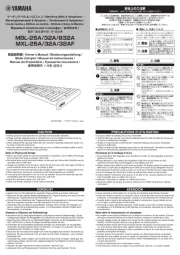
6 Juni 2025
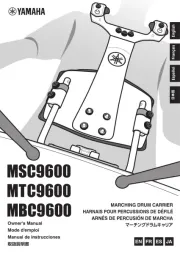
6 Juni 2025
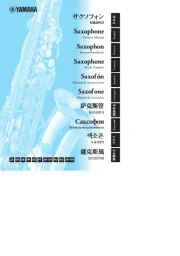
3 Juni 2025
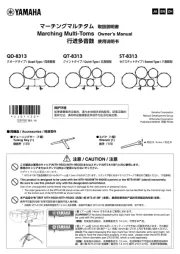
3 Juni 2025
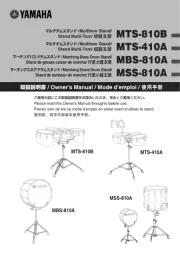
3 Juni 2025
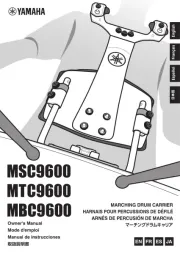
3 Juni 2025
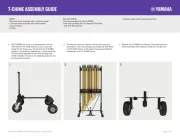
3 Juni 2025
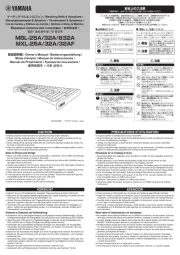
25 Mei 2025
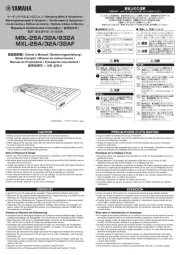
25 Mei 2025
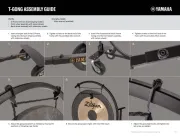
25 Mei 2025
Handleiding Muziekinstrument
- Roland
- Chord
- Overtone Labs
- NUX
- Otamatone
- Efnote
- Mooer
- Xvive
- Eurolite
- Boss
- Jupiter
- IK Multimedia
- Palmer
- Pyle
- TAMA
Nieuwste handleidingen voor Muziekinstrument
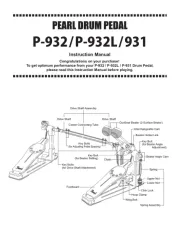
5 Augustus 2025
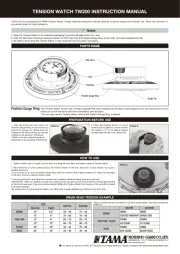
4 Augustus 2025
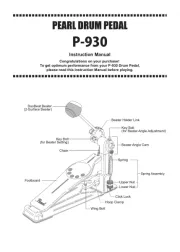
4 Augustus 2025

4 Augustus 2025
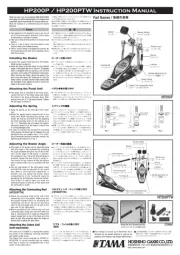
4 Augustus 2025
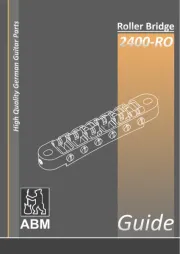
4 Augustus 2025
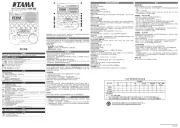
4 Augustus 2025
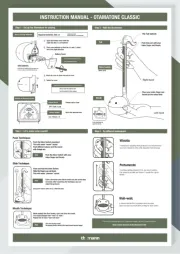
4 Augustus 2025
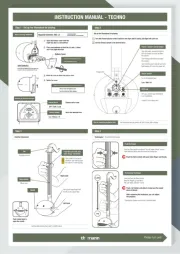
4 Augustus 2025

4 Augustus 2025